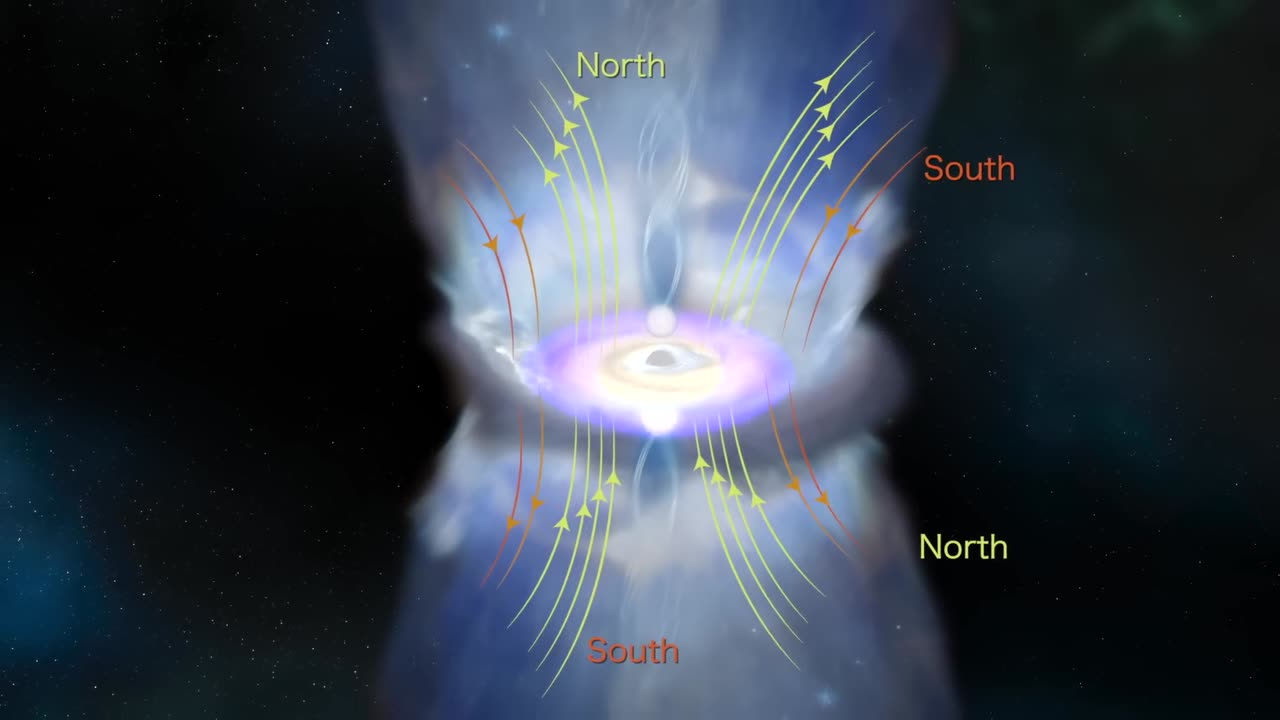Premium Only Content

A Black Hole's Magnetic Reversal
A rare and enigmatic outburst from a galaxy 236 million light-years away may have been sparked by a magnetic reversal, a spontaneous flip of the magnetic field surrounding its central black hole.
At the end of 2017, a galaxy called 1ES 1927+654 brightened by nearly 100 times in visible light. When NASA's Neil Gehrels Swift Observatory first examined the galaxy in May 2018, its UV emission was also 12 times higher but steadily declining, indicating an earlier unobserved peak. Then, in June, the galaxy’s higher-energy X-ray emission disappeared, later reappearing in October.
An international science team has linked these unusual observations to changes in the black hole’s environment that likely would be triggered by a magnetic switch.
Most big galaxies, including our own Milky Way, host a supermassive black hole weighing millions to billions of times the Sun's mass. When matter falls toward one, it first collects into a vast, flattened structure called an accretion disk. As the material slowly swirls inward, it heats up and emits visible, UV, and lower-energy X-ray light. Near the black hole, a cloud of extremely hot particles called the corona produces higher-energy X-rays. The brightness of these emissions depends on how much material streams toward the black hole.
The scientists think a magnetic reversal, where the north pole becomes south and vice versa, best fits the observations. The field initially weakens at the outskirts of the accretion disk, leading to greater heating and brightening in visible and UV light. As the weakening extends toward the black hole, the field can no longer support the corona and the high-energy X-rays vanish. As the magnetic field gradually strengthens in its new orientation, it restores the corona and the galaxy eventually settles into its pre-outburst state.
-
 2:42:40
2:42:40
TruthStream with Joe and Scott
14 hours agoTHOMAS AND GROK: AI, Bible decodes, The JESUS Cube live 9/6 #487
25K2 -
 2:34:46
2:34:46
BlackDiamondGunsandGear
8 hours agoGet Prepped / After Hours Armory / LIVE SHOW /
17K1 -
 2:01:39
2:01:39
Tundra Tactical
7 hours ago $6.38 earned🛑LIVE NOW!! This spits in the face of the Second Amendment.🛑
27.1K4 -
 2:34:46
2:34:46
DLDAfterDark
6 hours ago $1.64 earnedIt's SHTF! Do You Have What You Need?? Let's Review Items & Priorities
19.1K4 -
 28:58
28:58
Stephen Gardner
7 hours ago🚨Explosive allegations: Rosie O’Donnell connects Trump to Epstein scandal!?
33.9K61 -
 LIVE
LIVE
SavageJayGatsby
2 days agoSpicy Saturday | Let's Play: Grounded
520 watching -
 2:06:27
2:06:27
MattMorseTV
8 hours ago $50.92 earned🔴Vance just went SCORCHED EARTH.🔴
128K182 -
 46:41
46:41
The Mel K Show
13 hours agoMel K & Corey DeAngelis | The Hopelessly Captured Teacher’s Unions: Biggest Threat to Our Children & Future | 9-6-25
36.5K5 -
 2:52:42
2:52:42
Mally_Mouse
1 day ago🔥🍺Spicy HYDRATE Saturday!🍺🔥-- Let's Play: Grounded
32.7K3 -
 1:32:27
1:32:27
Patriots With Grit
9 hours ago"HELP... They're Killing Me" | Gail Seiler
13.6K1